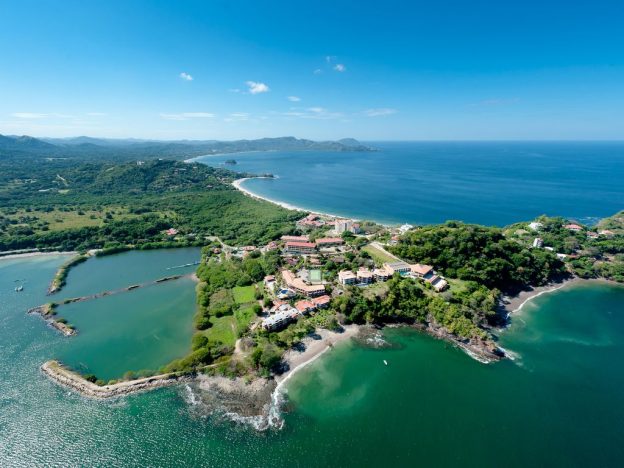La Paz Community School is nestled in between several unique communities along the central coastal region of Guanacaste. La Paz students come from as far south as Playa Negra to as far north as Liberia. The majority of La Paz students come from the towns of Potrero, Flamingo, Brasilito, Huacas, Villareal, Playa Grande, and Tamarindo which each offer their own little slice of local and international culture.
The province of Guanacaste
The province is located in the northwestern part of the country, along the coast of the Pacific Ocean. It borders Nicaragua to the north, and to the east there is the province of Alajuela, with the province of Puntarenas to the south. It is the most sparsely populated of all the provinces of Costa Rica and covers an area of 10,141 km2 (3,915 sq mi). As of 2010 Guanacaste had a population of 327,000.
Guanacaste’s climate and culture are unique among Costa Rican provinces. The province experiences little rain and consistent heat from November to April, resulting in ubiquitous tropical dry forests as a natural adaption to the dry season conditions. Irrigation of the agricultural land is necessary during the long dry period. From May to October, the climate is similar to that of San José, consisting of showers daily and moderate temperatures. Guanacaste is, however, considerably warmer than other provinces located at higher elevations.
The province has an economic and cultural heritage based on beef cattle ranching and more recently has begun to rely heavily on tourism and development. Most of the area is covered by small patches of forest, scattered trees and large pastures of coarse grasses where Brahman cattle and related breeds graze. Historically, the main source of income for Guanacaste was cattle ranching, however this is declining in Guanacaste due to an international drop in the demand for beef. Many pastures are naturally reverting to dry forests or are being converted to tree plantations.
The other agricultural products of relative importance in the province are sugar cane and cotton, and since the late 1980s, with the creation of a large-scale irrigation program, rice has become a prominent crop.
For the past two decades, tourism has emerged as a new and growing activity in the local economy. The combination of beaches like Playas del Coco, Playa Tamarindo, Playa Flamingo, and the sunny dry season that coincides with the winter months in northern latitudes have made tourism a key economic activity


